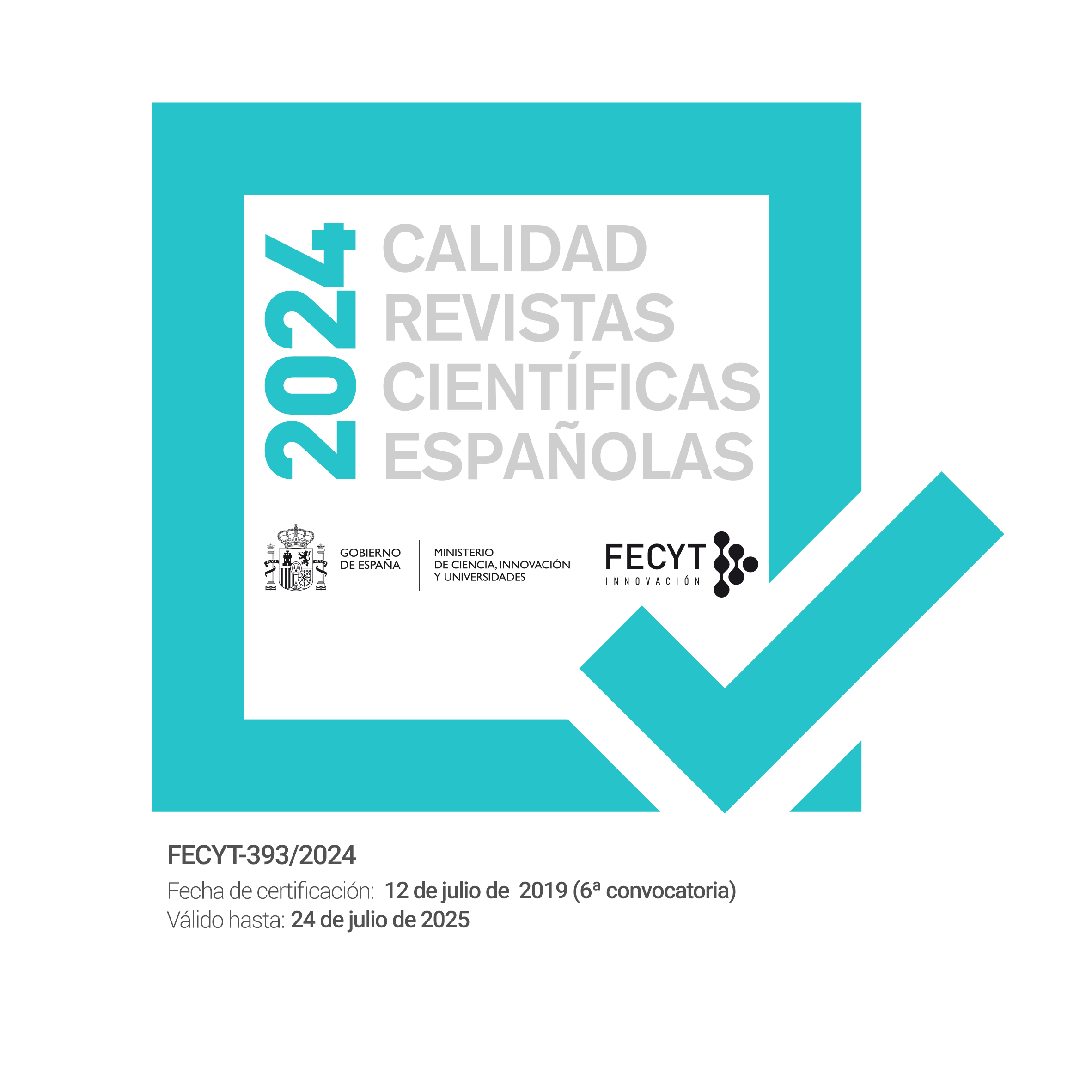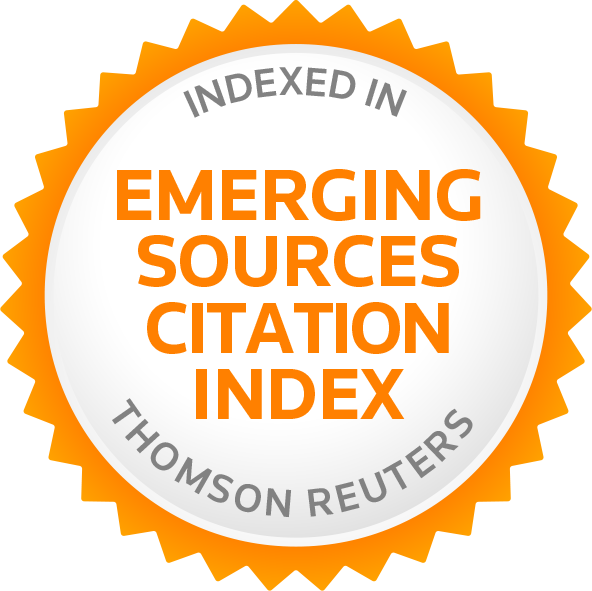Análisis de la Potencialidad de Ocurrencia de Vertederos Ilegales en la Isla de La Palma, España.
DOI:
https://doi.org/10.12795/rea.2017.i34.13Palabras clave:
Vertedero ilegal, análisis factorial, análisis discriminanteResumen
La proliferación de vertederos ilegales (VI) tiene impactos negativos, especialmente en áreas ecológicamente sensibles o de gran atractivo turístico, como los territorios insulares. Este trabajo se centra en la caracterización de los vertederos ilegales localizados en la Isla de La Palma. Se identificaron 153 localizaciones de vertederos ilegales mediante trabajo de campo y la fotointerpretación de ortofotografías con resolución espacial de 0,5 m de los años 2012 y 2015. Esta información se incluyó en una base datos geoespacial junto a distintas variables potencialmente explicativas de diferente tipología (150): tipo de residuo, control y vigilancia, socioeconómicas, de accesibilidad, distancia a elementos de interés, visibilidad y físicas. Con apoyo de la estadística exploratoria (AE) y técnicas de análisis multivariante: análisis factorial (AF) y análisis discriminante (AD), se analizó el grado de asociación entre las variables explicativas y la ocurrencia de VI. AF explicó una varianza acumulada del 82,34% considerando siete factores (Kaiser Mayer Olking: 0,71). AD mostró una correlación canónica del 0.854. AD consiguió distinguir entre zonas afectadas y no afectadas, usando variables como: densidad de población, distancia a superficies agrícolas, distancia a núcleos urbanos o la pendiente y el indicador de vegetación de diferencia normalizada (NDVI). Asimismo, AF identificó estas mismas variables como variables controladoras de la ocurrencia de VI.
Descargas
Citas
Directive 2004/35/EC. of the European Parliament and of the Council of 21 April 2004 on environmental liability with regard to the prevention and remedying of environmental damage. Off J Eur Communities 2004(L143):0056–75
Directive 2008/98/EC. of the European Parliament and of the Council of 19 November 2008 on waste and repealing certain Directives. Off J Eur Communities 2008(L312):0003–30
Akbari, V., Rajabi, M.A., Chavoshi, S.H. y Shams, R. (2008). Landfill Site Selection by Combining GIS and Fuzzy Multi Criteria Decision Analysis, Bandar Abbas. World Applied Science Journal 3(1), 39–47
Alexakis, D. D., y Sarris, A. (2014). Integrated GIS and remote sensing analysis for landfill sitting in Western Crete, Greece. Environmental Earth Sciences 72(2), 467-482. https://doi.org/10.1007/s12665-013-2966-y
Allgaier, G. y Stegmann, F. (2006). Old Landfills in the Focus of the Urban Land Management. Workshop on Landfill Reclamation and Remediation Technologies (International Waste Working Group and University of Padova), junio 7-9. CISA Environmental Sanitary Centre, Cagliari.
Apostol, L., y Mihai, F. (2011). The Process of Closing Down Rural Landfills. Case Study: Neamt County. Present Environment and Sustainable Development 5 (2): 25-41.
Biotto, G., Silvestri, S., Gobbo, L., Furlan, E., Valenti, S., y Rosselli, R. (2009).GIS, multi‐criteria and multi‐factor spatial analysis for the probability assessment of the existence of illegal landfills GIS, multi-criteria and multi-factor spatial analysis for the probability assessment of the existence of illegal landfills. International Journal of Geographical Information Science 23(10), 1233–1244. https://doi.org/10.1080/13658810802112128
Boots, B.N., Getis, A., (1988). Point Pattern Analysis. Sage University Scientific Geography, series no. 8. Sage Publications, Beverly Hills, 93 p.
Breslow, N.E. y Cain, K.C. (1988). Logistic regression for two-stage case-control data. Biometrika 75 (1), 11–20. https://doi.org/10.1093/biomet/75.1.11
Carranza, E. J. M., Hale, M., y Faassen, C. (2008). Selection of coherent deposit-type locations and their application in data-driven mineral prospectivity mapping. Ore Geology review 33, 536–558. https://doi.org/10.1016/j.oregeorev.2007.07.001
Kim, G., Chang, G. K. Y., y Kelleher, D. (2008).Unit pricing of municipal solid waste and illegal dumping: an empirical analysis of Korean experience. Environnmental Economics and Policy Studies, 167–176. https://doi.org/10.1007/BF03353988
Demesouka, O. E., Vavatsikos, A. P., y Anagnostopoulos, K. P. (2014). GIS-based multicriteria municipal solid waste landfill suitability analysis: A review of the methodologies performed and criteria implemented. Waste Management & Research 32(4), 270 –296. https://doi.org/10.1177/0734242X14526632
Diggle, P.J., (1983). Statistical Analysis of Spatial Point Patterns. Academic Press, London, 148p.
Doak, M., Khan, S., Kelly, G. y Silvestri, S. (2007). The Use of Remote Sensing to Map Illegal Landfills at the Border of Ireland/Northern Ireland. Paper presented at the 11th International Waste Management and Landfill Symposium, Cagliari, Sardinia, October 1-5.
EPA, (1998). Illegal dumping prevention guidebook. EPA905-B-97-001, United States Environmmental Protection Agency. Internet: www.epa.gov/region5/illegaldumping/ (10.8.2011).
Jordá-Borrell, R., Ruiz-Rodríguez, F., y Lucendo-Monedero, Á. L. (2014). Factor analysis and geographic information system for determining probability areas of presence of illegal landfills. Ecological Indicators 37, 151–160. https://doi.org/10.1016/j.ecolind.2013.10.001
Kontos, T. D., Komilis, D. P., y Halvadakis, C. P. (2005). Siting MSW landfills with a spatial multiple criteria analysis methodology. Waste Management 25, 818–832. https://doi.org/10.1016/j.wasman.2005.04.002
Kothari, R., Kumar, V., Panwar, N.L., y Tyagi, V.V. (2014). Municipal solid-waste management strategies for renewable energy options. Sustainable Bioenergy Production, 267p. https://doi.org/10.1201/b16764-16
Liu, Y., Kong, F., y Santibanez, E. D. R. (2017). Dumping, waste management and ecological security: Evidence from England. Journal of Cleaner Production, 1-13. https://doi.org/10.1016/j.jclepro.2016.12.097
Lucendo-Monedero, A. L., Jordá-Borrell, R., y Ruiz-Rodríguez, F. (2014). Predictive model for areas with illegal landfills using logistic regression. Journal of Environmental Planning and Management 58(7), 1309–1326. https://doi.org/10.1080/09640568.2014.993751
Matos, J., y Kranjc, J. (2012). Attractiveness of roads for illegal dumping with regard to regional differences in Slovenia. Acta geographica Slovenica 52(2), 431–451. https://doi.org/10.3986/AGS52207
Matsumoto, S., y Takeuchi, K. (2011). The effect of community characteristics on the frequency of illegal dumping. Environmental Economics and Policy Studies, 13(3), 177–193. https://doi.org/10.1007/s10018-011-0011-5
Mohee, R., Mauthoor, S., Bundhoo, Z. M. A., Somaroo, G., y Soobhany, N. (2015). Current status of solid waste management in small island developing states: A review. Waste Management 43, 539–549. https://doi.org/10.1016/j.wasman.2015.06.012
Renou, S., Givaudan, J. G., Poulain, S., Dirassouyan, F., y Moulin, P. (2008). Landfill leachate treatment: Review and opportunity. Journal of Hazardous Materials 150, 468–493. https://doi.org/10.1016/j.jhazmat.2007.09.077
Schill, W., Jockel, K. H., Drescher, K., y Timm, J., (1993).Logistic analysis in case-control studies under validation sampling. Biometrika 80(2), 339–352. https://doi.org/10.1093/biomet/80.2.339
Sebenik, I. (1994). Pokrajinske značilnosti manjših neurejenih odlagališč odpadkov v Sloveniji z zasnovo akcijskega načrta ureditve in oceno tveganja onesnaženja podzemnih voda. Geographica Slovenica, 26-1.
Şener, E., y Karag, R. (2011). Solid waste disposal site selection with GIS and AHP methodology: a case study in Senirkent – Uluborlu ( Isparta ) Basin. EnvironMonit Assess 173, 533–554. https://doi.org/10.1007/s10661-010-1403-x
Şener, Ş., Şener, E., Nasc B. y Karagüzel R. (2010). Combining AHP with GIS for landfill site selection: A case study in the Lake Beyşehir catchment area. Waste management 30, 2037–2046. https://doi.org/10.1016/j.wasman.2010.05.024
Silvestri, S., y Omri, M. (2008). A method for the remote sensing identification of uncontrolled landfills: formulation and validation. International Journal of Remote Sensing 29 (4), 975–989. https://doi.org/10.1080/01431160701311317
Silverman, B.W. (1986). Density Estimation for Statistics and Data Analysis. London - New York, Chapman and Hall, 175 p.
Smith, A., Brown, K., Ogilvie, S., Rushton, y K., Bates, J. (2001). Waste Management Options and Climate Change. Final Report to the European Commission, DG Environment.
Smrekar, A. (2007). Divja odlagalişča odpadkov na območju Ljubljane. Georitem 1. Ljubljana.
Tasaki, T. (2004). Substance flow analysis of brominated flame retardants and related compounds in waste TV sets in Japan. Waste Management 24, 571–580. https://doi.org/10.1016/j.wasman.2004.02.008
Tasaki, T., Kawahata, T., Osako, M., Matsui, Y., Takagishi, S., Morita, A., & Akishima, S. (2007). A GIS-based zoning of illegal dumping potential for efficient surveillance. Waste Management 27, 256–267. https://doi.org/10.1016/j.wasman.2006.01.018
Tukey, J. W. (1977). Exploratory Data Analysis. Reading. MA: Addison-Wesley.
Uyan, M. (2014): MSW landfill site selection by combining AHP with GIS for Konya, Turkey. Envirnonmental Earth Sciences 71(4), 1629–1639.
https://doi.org/10.1007/s12665-013-2567-9
Vasiljević, T., Srdjević, Z., Bajčetić, R. y Miloradov, M. (2012). GIS and the Analytic Hierarchy Process for Regional Landfill Site Selection in Transitional Countries: A Case Study From Serbia. Environmental Management 49(2): 445-458. http://dx.doi.org/10.1007/s00267-011- 9792-3
Webb, B., Marshall, B., Czarnomski, S. y Tilley, N. (2006). Fly-tipping, Causes, Incentives and Solutions. London, Jill Dando Institute of Crime, University College. http://archive.defra.gov.uk/environment/quality/local/flytipping/documents/flytipping-causes.pdf (5.8.2011).443
Descargas
Publicado
Cómo citar
Número
Sección
Licencia
La edición electrónica de la Revista de Estudios Andaluces se ofrece en acceso abierto desde el número 28 publicado en 2011 hasta la actualidad. Las ediciones impresa y electrónica de esta Revista son editadas por la Editorial de la Universidad de Sevilla, siendo necesario citar la procedencia en cualquier reproducción parcial o total.
La Revista de Estudios Andaluces no cobra tasas por el envío de trabajos, ni tampoco cuotas por la publicación de sus artículos. La Revista es gratuita desde el momento de la publicación de cada número y sus contenidos se distribuyen con la licencia “CreativeCommons Atribución-NoComercial-SinDerivar 4.0 Internacional” , que permite al usuario de la Revista de Estudios Andaluces criterios que cumplen con la definición de open access de la Declaración de Budapest en favor del acceso abierto. Puede consultar desde aquí la versión informativa y el texto legal de la licencia. Esta circunstancia ha de hacerse constar expresamente de esta forma cuando sea necesario.







